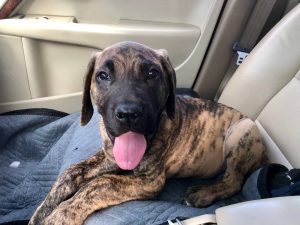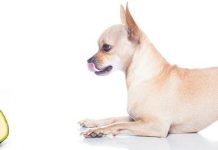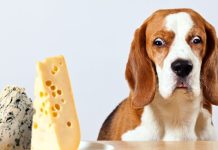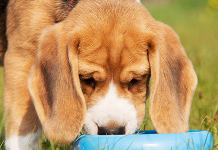Daniff Dog Lifespan: How Long Do Daniff Dogs Live?
Welcome to the world of Daniff dogs! If you’re considering bringing home this delightful mixed-breed companion, one of the essential aspects to explore is their lifespan. The Daniff, a cross between the majestic Great Dane and the powerful Mastiff, boasts a unique blend of traits that endear them to countless dog lovers. As with any dog, understanding their lifespan is crucial for responsible ownership and ensuring they receive the best possible care throughout their life. In this exploration, we’ll delve into the factors that influence the Daniff dog’s lifespan, common health considerations, and valuable insights on how to extend their years of joyous companionship. Whether you’re already a proud Daniff parent or considering welcoming one into your home, this guide will equip you with the knowledge to provide your furry friend with a long, happy, and healthy life.
How Long Do Daniff Dogs Live?
The Daniff is a mixed-breed dog resulting from the crossbreeding of a Great Dane and a Mastiff. As with any mixed breed, their lifespan can vary based on genetics, individual health, and care. On average, Daniff dogs have a lifespan of around 8 to 12 years.

It’s important to note that larger dog breeds, such as Great Danes and Mastiffs, tend to have shorter lifespans compared to smaller breeds. Additionally, certain health issues can be more prevalent in larger dogs, which may also affect their lifespan.
To ensure your Daniff lives a long and healthy life, it’s essential to provide proper veterinary care, a balanced diet, regular exercise, and a loving and safe environment. Early detection of any health issues and prompt treatment can also contribute to a longer and happier life for your furry companion.
Factors That Affect Daniff Dog Lifespan
The lifespan of a Daniff dog, like any other dog, can be influenced by various factors. Some of the key factors that can affect the lifespan of a Daniff or any large breed dog are:
Genetics: Genetics play a significant role in determining a dog’s lifespan. Certain genetic factors may predispose a Daniff to specific health conditions, which can impact their overall lifespan.
Size: Larger dog breeds, like the Daniff, tend to have shorter lifespans compared to smaller breeds. This is a general trend observed across many dog breeds.
Healthcare and Nutrition: Providing proper healthcare and a balanced diet is crucial for a dog’s overall health and longevity. Regular veterinary check-ups, vaccinations, and preventive measures can help identify and address health issues early, potentially extending their lifespan.
Exercise and Weight Management: Regular exercise is essential to maintain a healthy weight and overall fitness level for a Daniff. Obesity can lead to various health problems and shorten their lifespan.
Breed-Specific Health Issues: Both Great Danes and Mastiffs, the parent breeds of the Daniff, are susceptible to certain health conditions. Some of these issues, like hip dysplasia, heart problems, and bloat, can also affect Daniffs.
Environmental Factors: The living environment and exposure to toxins or hazardous substances can impact a dog’s health and longevity.
Spaying/Neutering: Spaying or neutering a dog at the appropriate age may reduce the risk of certain health conditions and can contribute to a longer life.
Stress and Mental Well-being: A dog’s mental well-being is also important for overall health. Providing a safe, comfortable, and enriching environment can positively influence their lifespan.
Accidents and Trauma: Accidents or traumatic events can sadly impact a dog’s lifespan. Keeping your Daniff in a safe and controlled environment can help reduce the risk of such incidents.
Remember that while these factors can influence a Daniff’s lifespan, individual dogs may still have unique variations in their longevity. Responsible ownership, attention to their health, and providing a loving and caring home can help ensure your Daniff lives a happy and healthy life for as long as possible.
Life Stages Of A Daniff Dog
The life stages of a Daniff dog, like any other dog, can be divided into several distinct periods, each characterized by specific developmental and behavioral changes. These life stages are approximate and can vary slightly from dog to dog:
Puppy Stage (0-1 year): The puppy stage begins from birth and continues until around 12 months of age. During this time, Daniff puppies are highly energetic, curious, and are rapidly growing. They require a lot of socialization, training, and supervision to ensure they develop into well-behaved and well-adjusted adults.
Adolescent Stage (1-2 years): The adolescent stage is a transitional phase where Daniff dogs start to mature physically and sexually. They may exhibit some teenage-like behaviors, testing boundaries, and being a bit more independent. Training and consistency during this stage are crucial to reinforce good behavior.
Adult Stage (2-7 years): The adult stage is the longest period in a Daniff’s life. They are fully grown and have settled into their adult personalities. They are generally more stable, both physically and emotionally. This is the time when they are most active and need regular exercise to maintain their health and well-being.
Senior Stage (7 years and older): The senior stage typically begins around 7 years of age. Daniff dogs are considered seniors at this point, and their activity level may decrease. They might start experiencing age-related issues, such as joint problems or reduced energy. Regular vet check-ups become even more important during this stage to monitor their health and manage any age-related conditions.
It’s important to remember that these stages are approximate, and individual dogs may reach different milestones at slightly different times. As your Daniff moves through these life stages, their care requirements may change, so it’s essential to adapt their diet, exercise routine, and healthcare as they age to ensure they have a comfortable and healthy life. Providing love, attention, and proper care throughout each life stage will contribute to a happy and fulfilling life for your Daniff companion.
Daniff Dog Lifespan: Common Signs Of Aging In Daniff Dogs
The lifespan of a Daniff dog, as mentioned earlier, is typically around 8 to 12 years. As they age, they go through certain physical and behavioral changes that are indicative of the aging process. Here are some common signs of aging in Daniff dogs:
Gray Hair: Just like humans, older Daniffs may start to develop gray hairs, especially around the muzzle and face.
Reduced Energy Levels: As dogs age, they tend to become less energetic and may not be as active as they were during their younger years.
Joint Stiffness and Mobility Issues: Arthritis and other joint-related problems may develop as your Daniff gets older. You might notice them having difficulty getting up, climbing stairs, or jumping.
Weight Gain or Loss: Older Daniffs may experience changes in their metabolism, leading to weight gain or loss. It’s important to monitor their weight and adjust their diet accordingly.
Dental Issues: Dental problems, such as gum disease and tooth decay, can become more prevalent with age. Regular dental care is essential to maintain oral health.
Changes in Appetite: Some senior Daniffs may experience a decrease in appetite, while others might still have a healthy appetite. Monitor their eating habits and consult a vet if there are any significant changes.
Sleeping More: Older dogs tend to sleep more and may be less active during the day.
Changes in Vision and Hearing: Daniffs may develop age-related vision and hearing issues, which can affect their ability to see or hear properly.
Behavioral Changes: Senior Daniffs might exhibit changes in behavior, such as increased anxiety, confusion, or restlessness.
Decreased Immune System Function: As dogs age, their immune system may weaken, making them more susceptible to illnesses.
Incontinence: Some older dogs may experience urinary incontinence due to weakened bladder control muscles.
Lumps and Bumps: As dogs age, they may develop benign skin growths, but it’s essential to have any new lumps or bumps checked by a veterinarian to rule out more serious issues.
It’s important to remember that while these signs are common in aging dogs, they can also be indicative of underlying health conditions. Regular veterinary check-ups become even more critical as your Daniff ages, so any potential health issues can be detected and addressed early. With proper care, attention, and a suitable diet, you can help your senior Daniff maintain a good quality of life during their golden years.
Extending The Lifespan Of A Daniff Dog
Extending the lifespan of a Daniff dog, or any dog, requires a combination of proper care, attention to their health, and providing a safe and loving environment. Here are some essential tips to help promote a longer and healthier life for your Daniff:
Regular Veterinary Check-ups: Schedule regular check-ups with your veterinarian, especially as your Daniff gets older. These check-ups can help detect and address any health issues early on, increasing the chances of successful treatment.
Balanced Diet: Feed your Daniff a high-quality, balanced diet appropriate for their age, size, and activity level. Obesity can lead to various health problems, so it’s crucial to monitor their weight and adjust their diet as needed.
Regular Exercise: Engage your Daniff in regular exercise to keep them physically fit and mentally stimulated. Tailor the exercise routine to their age and abilities, considering their joints and overall health.
Weight Management: Maintain a healthy weight for your Daniff throughout their life. Overweight dogs are more susceptible to health issues, so monitor their diet and avoid overfeeding.
Proper Dental Care: Dental health is vital for your dog’s overall well-being. Brush their teeth regularly, provide dental treats or toys, and schedule professional dental cleanings as recommended by your vet.
Preventive Care: Stay up to date with vaccinations, flea and tick prevention, and heartworm medication. Preventive care can protect your Daniff from various diseases and health risks.
Provide Mental Stimulation: Engage your Daniff in mental activities, such as puzzle toys or training exercises. Mental stimulation can help keep their mind sharp and prevent boredom.
Safe Environment: Ensure your home and yard are safe for your Daniff to prevent accidents and injuries. Supervise them during outdoor activities, and keep them away from toxic plants and substances.
Maintain Social Interaction: Continue to provide socialization and positive interactions with other dogs and people throughout their life.
Gentle Exercise in Old Age: As your Daniff enters their senior years, adjust their exercise routine to be more gentle and low-impact to accommodate their aging joints and muscles.
Senior Dog Health Monitoring: Be attentive to any changes in behavior or health as your Daniff gets older. Regularly check for lumps, bumps, or signs of pain and report any concerns to your vet promptly.
Love and Attention: Lastly, show your Daniff love, attention, and care throughout their life. A loving and supportive environment can contribute to their overall well-being and happiness.
Remember that each dog is unique, and some factors that influence longevity are beyond our control. However, by following these guidelines and providing the best possible care for your Daniff, you can increase the likelihood of them living a long, healthy, and happy life.
What Health Problems Do Daniff Dogs Have?
Daniff dogs, being a mix of Great Danes and Mastiffs, can inherit health issues from both parent breeds. While mixed-breed dogs may have fewer genetic health problems than purebred dogs due to increased genetic diversity, it’s essential to be aware of potential health issues that Daniff dogs may be prone to. Some common health problems seen in Daniff dogs include:
Hip Dysplasia: Both Great Danes and Mastiffs are susceptible to hip dysplasia, a genetic condition where the hip joint doesn’t develop properly, leading to arthritis and mobility issues.
Gastric Dilatation-Volvulus (Bloat): Large and deep-chested breeds like Daniffs can be prone to bloat, a life-threatening condition where the stomach fills with gas and twists on itself.
Heart Problems: Dilated cardiomyopathy, a heart condition characterized by the enlargement of the heart chambers, can affect both Great Danes and Mastiffs.
Joint Problems: Apart from hip dysplasia, Daniffs may be prone to other joint issues, such as elbow dysplasia and osteoarthritis.
Eye Problems: Both parent breeds are known to have certain eye conditions, such as progressive retinal atrophy (PRA) and cataracts.
Cancer: As with many large dog breeds, Daniffs can be at a higher risk of developing various types of cancer.
Obesity: Due to their large size and potential for joint issues, Daniffs can be prone to obesity, which can exacerbate other health problems.
Hypothyroidism: An underactive thyroid gland can affect Daniffs and cause symptoms like weight gain, lethargy, and skin problems.
Ear Infections: Daniffs’ floppy ears can be more prone to ear infections if not cleaned and maintained regularly.
It’s important to note that not all Daniffs will develop these health issues, and responsible breeding practices can help reduce the risk of passing on genetic health problems. If you’re considering getting a Daniff puppy, choose a reputable breeder who performs health checks on the parent dogs to ensure they are free from significant genetic issues.
Regular veterinary check-ups, a balanced diet, regular exercise, and early detection and management of any health issues can help ensure a longer and healthier life for your Daniff companion.
How To Keep Your Daniff Dog Healthy?
Keeping your Daniff dog healthy involves a combination of proper care, attention to their needs, and preventive measures. Here are some essential tips to help you keep your Daniff healthy:
Regular Veterinary Check-ups: Schedule regular visits to the veterinarian for check-ups and vaccinations. Regular examinations can help detect any health issues early on and ensure your Daniff is up to date on preventive treatments.
Balanced Diet: Provide a high-quality, balanced diet that meets your Daniff’s nutritional needs. Consider their age, size, activity level, and any specific health requirements they may have.
Maintain a Healthy Weight: Monitor your Daniff’s weight and body condition regularly. Obesity can lead to various health problems, so adjust their diet and exercise routine as needed to maintain a healthy weight.
Exercise: Engage your Daniff in regular exercise to keep them physically fit and mentally stimulated. Tailor the exercise routine to their age and abilities, ensuring they get enough physical activity without overexerting them.
Socialization: Socialize your Daniff with other dogs and people from an early age. Proper socialization can help them develop good behavior and reduce anxiety in various situations.
Training: Start training your Daniff early and be consistent with positive reinforcement methods. Training helps establish good behavior and strengthens the bond between you and your dog.
Dental Care: Brush your Daniff’s teeth regularly and provide dental treats or toys to help maintain their oral health.
Grooming: Regularly groom your Daniff to keep their coat clean and free from mats. Check their ears, eyes, and paws regularly for signs of infection or irritation.
Parasite Prevention: Keep up with flea and tick prevention as well as regular deworming to protect your Daniff from parasites.
Provide a Safe Environment: Ensure your home and yard are safe for your Daniff, free from hazardous substances or objects that could harm them.
Temperature Regulation: Daniffs can be sensitive to extreme temperatures, especially heat. Provide a cool and shaded place for them during hot weather and avoid excessive exercise during peak heat hours.
Regular Play and Mental Stimulation: Engage in regular playtime and provide mental stimulation, such as puzzle toys or training exercises, to keep their mind sharp and prevent boredom.
Love and Attention: Lastly, show your Daniff love, attention, and care. A loving and nurturing environment can positively impact their overall well-being and happiness.
By following these tips and providing responsible and attentive care, you can help ensure that your Daniff enjoys a long, healthy, and happy life as your beloved companion.
Daniff Dog Lifespan: Frequently Asked Questions
Q: What is the average lifespan of a Daniff dog?
A: The average lifespan of a Daniff dog is around 8 to 12 years.
Q: Are Daniff dogs prone to specific health issues?
A: Daniff dogs, being a mix of Great Danes and Mastiffs, may be prone to certain health issues common to both parent breeds, such as hip dysplasia, bloat, heart problems, joint problems, eye issues, and cancer.
Q: How can I extend the lifespan of my Daniff dog?
A: To extend the lifespan of your Daniff, provide regular veterinary check-ups, a balanced diet, regular exercise, preventive care, a safe environment, mental stimulation, and lots of love and attention.
Q: What is the size and weight of a Daniff dog?
A: Daniffs are large dogs, with males typically weighing between 140 to 175 pounds (63 to 79 kg) and females weighing between 115 to 140 pounds (52 to 63 kg).
Q: Are Daniffs good family dogs?
A: Daniffs can be great family dogs as they are often gentle, loyal, and affectionate. However, due to their large size, early socialization and training are essential to ensure they are well-behaved around children and other pets.
Q: Do Daniffs require a lot of exercise?
A: Daniffs are active dogs and require regular exercise to maintain their physical and mental well-being. Daily walks and playtime are essential to keep them healthy and happy.
Q: Are Daniffs easy to train?
A: Daniffs are intelligent dogs, but their training can sometimes be challenging due to their stubborn nature. Consistent and positive reinforcement-based training methods work best with this breed.
Q: How much grooming does a Daniff need?
A: Daniffs have short to medium-length coats, and they require regular grooming to keep their coat clean and free from mats. Regular brushing and occasional baths are usually sufficient.
Q: Are Daniffs good guard dogs?
A: Daniffs can make good guard dogs due to their imposing size and protective nature. However, proper training and socialization are necessary to ensure they distinguish between genuine threats and normal situations.
Q: Can Daniffs tolerate hot weather?
A: Daniffs are sensitive to extreme temperatures, especially heat. They can be at risk of heatstroke, so it’s essential to provide them with a cool and shaded place during hot weather and avoid excessive exercise in high temperatures.
Conclusion
In conclusion, the Daniff is a mixed-breed dog resulting from the crossbreeding of a Great Dane and a Mastiff. Their average lifespan is around 8 to 12 years. To ensure your Daniff lives a long and healthy life, it’s important to provide proper care, attention, and a loving environment.
Daniffs, being large dogs, may be prone to certain health issues common to their parent breeds, such as hip dysplasia, bloat, heart problems, joint problems, eye issues, and cancer. Regular veterinary check-ups, a balanced diet, regular exercise, and preventive care are essential in maintaining their overall health.
Proper socialization and training are crucial for Daniffs, especially considering their large size. They can make great family dogs with the right training and early socialization.
To keep your Daniff healthy and happy, provide regular exercise, mental stimulation, and grooming. Be attentive to their needs, and show them love and attention throughout their life.
By following these guidelines and being a responsible and caring owner, you can enjoy a wonderful companionship with your Daniff and give them the best chance at a long and fulfilling life.






